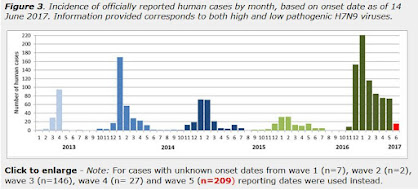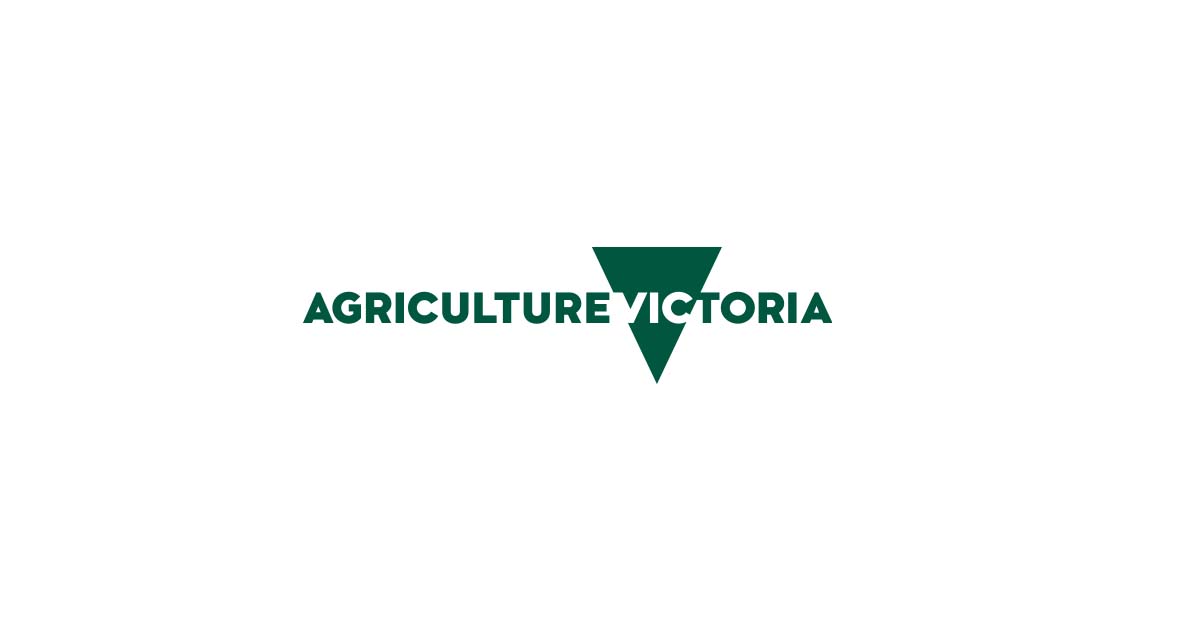...
Detection in Australia
A response to outbreaks of high pathogenicity avian influenza (HPAI) is currently underway on 8 Victorian poultry farms, 2 in New South Wales and one in the ACT.
All infected premises across Victoria, NSW and the ACT have been depopulated.
Victoria
The first detection of an H7N3 HPAI strain was confirmed on 22 May 2024 at a poultry farm near Meredith, in the Golden Plains Shire, Victoria. Six other poultry farms in the shire are now infected, with the most recent confirmed on 24 June.
Tracing activities conducted in May also identified a separate H7N9 HPAI strain on a poultry farm near Terang in the Shire of Corangamite.
Get the latest on these outbreaks - Agriculture Victoria
New South Wales
The NSW Department of Primary Industries is currently responding to 2 outbreaks of H7N8 in poultry in the Hawkesbury district. The first was an egg farm confirmed on 19 June, and then on 22 June a broiler (chicken meat) farm located within the existing Restricted Area, was confirmed with the same strain.
NSW DPI has a 2 km Restricted Area in place around the infected properties. A broader Control Area is also in place.
These outbreaks are separate to the H7 HPAI strains found in Victorian poultry and are not linked. These outbreaks are likely to be a spillover of the virus from wild birds.
Get the latest on these outbreaks from NSW DPI
Australian Capital Territory
Following tracing activities in the ACT, the H7N8 HPAI strain was confirmed on 27 June at a poultry farm. The property was linked to one of the infected properties in NSW.
Government actions
The Australian, and state and territory governments along with affected poultry and egg industries, are working together to manage these outbreaks through well-established response arrangements.
A nationally agreed response plan to control and eradicate HPAI in Victoria is being implemented and regularly reviewed as the response progresses. A response plan has been prepared for implementation in NSW.
Testing at the CSIRO's Australian Centre for Disease Preparedness laboratory confirmed that these strains are genetically related to viruses previously detected in Australian wild birds. The viruses are not the H5 strain currently causing concern globally.
There is no connection between these detections of H7 HPAI in poultry and the detection of H5N1 avian influenza in a person, who recently returned from travel overseas.
Movement restrictions
Restricted Areas have been established around all infected premises in Victoria, NSW, and the ACT. A broader Control Area buffers the restricted areas. Within Restricted and Control areas, movement controls are in place, restricting the movement of poultry and birds, poultry products, equipment and certain vehicles.
Housing requirements have been issued by Agriculture Victoria for poultry and birds on properties within the Restricted and Control Areas. This requirement to house or keep poultry enclosed in cages or sheds helps to minimise contact with wild birds and reduces but does not eliminate the risk of spreading the disease.
All infected premises across Victoria, NSW and the ACT have been depopulated.
Updates on the situation, including on Restricted Area and Control Area zones and movement restrictions can be found on the Agriculture Victoria and NSW DPI websites. Details of the ACT situation can found on the ACT Government website.
Testing and surveillance
Testing of samples from the infected farms found that the viruses were similar to low pathogenicity avian influenza (LPAI) viruses detected in Australian wild bird samples.
There is no indication of an unusual disease event in Australian wild birds.
It is not unusual for LPAI to be detected in wild birds in Australia. On rare occasions, an LPAI can spill over from the wild bird population into domestic poultry, then mutate into HPAI strains in poultry. Previous outbreaks of HPAI in poultry in Australia were linked to the spillover of LPAI strains from wild birds.
Wild birds can carry LPAI viruses without showing signs of disease. Pre-emptive culling of wild birds is not an appropriate response to these incidents, as it is not known to have any impact on the spread of the disease.
Egg and chicken meat supply
The national layer hen flock has been impacted by these outbreaks which is resulting in some localised disruption to egg supplies to the retail, hospitality and manufacturing sectors. Consumers can expect to see some empty shelves in the short-term, however, supplies are being re-directed to areas with short supply.
Consumers should refrain from purchasing more eggs than required. Some retailers have already imposed purchasing limits which may extend across retail chains and jurisdictions, including rural and regional areas.
There has been no impact of the supply of chicken meat.
Disease outbreaks are dynamic. The Department of Agriculture, Fisheries and Forestry (DAFF) is monitoring the implications for supplies and working with the poultry industries and the retail sector to manage the supply and movement of product.
As part of this, a National Coordination Mechanism (NCM) involving key industry groups and governments has been meeting regularly to keep across the retail and egg supply situation.
...
Detection in Australia
A response to outbreaks of high pathogenicity avian influenza (HPAI) is currently underway on 8 Victorian poultry farms, 2 in New South Wales and one in the ACT.
All infected premises across Victoria, NSW and the ACT have been depopulated.
Victoria
The first detection of an H7N3 HPAI strain was confirmed on 22 May 2024 at a poultry farm near Meredith, in the Golden Plains Shire, Victoria. Six other poultry farms in the shire are now infected, with the most recent confirmed on 24 June.
Tracing activities conducted in May also identified a separate H7N9 HPAI strain on a poultry farm near Terang in the Shire of Corangamite.
Get the latest on these outbreaks - Agriculture Victoria
New South Wales
The NSW Department of Primary Industries is currently responding to 2 outbreaks of H7N8 in poultry in the Hawkesbury district. The first was an egg farm confirmed on 19 June, and then on 22 June a broiler (chicken meat) farm located within the existing Restricted Area, was confirmed with the same strain.
NSW DPI has a 2 km Restricted Area in place around the infected properties. A broader Control Area is also in place.
These outbreaks are separate to the H7 HPAI strains found in Victorian poultry and are not linked. These outbreaks are likely to be a spillover of the virus from wild birds.
Get the latest on these outbreaks from NSW DPI
Australian Capital Territory
Following tracing activities in the ACT, the H7N8 HPAI strain was confirmed on 27 June at a poultry farm. The property was linked to one of the infected properties in NSW.
Government actions
The Australian, and state and territory governments along with affected poultry and egg industries, are working together to manage these outbreaks through well-established response arrangements.
A nationally agreed response plan to control and eradicate HPAI in Victoria is being implemented and regularly reviewed as the response progresses. A response plan has been prepared for implementation in NSW.
Testing at the CSIRO's Australian Centre for Disease Preparedness laboratory confirmed that these strains are genetically related to viruses previously detected in Australian wild birds. The viruses are not the H5 strain currently causing concern globally.
There is no connection between these detections of H7 HPAI in poultry and the detection of H5N1 avian influenza in a person, who recently returned from travel overseas.
Movement restrictions
Restricted Areas have been established around all infected premises in Victoria, NSW, and the ACT. A broader Control Area buffers the restricted areas. Within Restricted and Control areas, movement controls are in place, restricting the movement of poultry and birds, poultry products, equipment and certain vehicles.
Housing requirements have been issued by Agriculture Victoria for poultry and birds on properties within the Restricted and Control Areas. This requirement to house or keep poultry enclosed in cages or sheds helps to minimise contact with wild birds and reduces but does not eliminate the risk of spreading the disease.
All infected premises across Victoria, NSW and the ACT have been depopulated.
Updates on the situation, including on Restricted Area and Control Area zones and movement restrictions can be found on the Agriculture Victoria and NSW DPI websites. Details of the ACT situation can found on the ACT Government website.
Testing and surveillance
Testing of samples from the infected farms found that the viruses were similar to low pathogenicity avian influenza (LPAI) viruses detected in Australian wild bird samples.
There is no indication of an unusual disease event in Australian wild birds.
It is not unusual for LPAI to be detected in wild birds in Australia. On rare occasions, an LPAI can spill over from the wild bird population into domestic poultry, then mutate into HPAI strains in poultry. Previous outbreaks of HPAI in poultry in Australia were linked to the spillover of LPAI strains from wild birds.
Wild birds can carry LPAI viruses without showing signs of disease. Pre-emptive culling of wild birds is not an appropriate response to these incidents, as it is not known to have any impact on the spread of the disease.
Egg and chicken meat supply
The national layer hen flock has been impacted by these outbreaks which is resulting in some localised disruption to egg supplies to the retail, hospitality and manufacturing sectors. Consumers can expect to see some empty shelves in the short-term, however, supplies are being re-directed to areas with short supply.
Consumers should refrain from purchasing more eggs than required. Some retailers have already imposed purchasing limits which may extend across retail chains and jurisdictions, including rural and regional areas.
There has been no impact of the supply of chicken meat.
Disease outbreaks are dynamic. The Department of Agriculture, Fisheries and Forestry (DAFF) is monitoring the implications for supplies and working with the poultry industries and the retail sector to manage the supply and movement of product.
As part of this, a National Coordination Mechanism (NCM) involving key industry groups and governments has been meeting regularly to keep across the retail and egg supply situation.
...





Comment